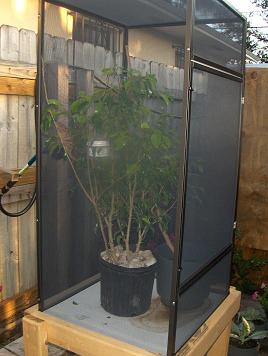Agentspades
New Member
Ok so after lots and lots of reading I am thinking of maybe making an outdoor enclosure for my veil cham. I live in south Florida so weather I would believe is not a problem. If I go ahead with this would I need any additional lighting, UV type stuff or would the natural elements suffice and also what are the pros and cons of this idea. Thanks a lot for all your help

